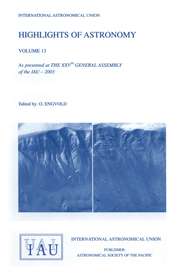No CrossRef data available.
Article contents
Atomic Hydrogen at High Redshift
Published online by Cambridge University Press: 30 March 2016
Abstract
Core share and HTML view are not available for this content. However, as you have access to this content, a full PDF is available via the ‘Save PDF’ action button.
After the production of the ionizing background by the first generation of stars, neutral gas must be confined to sufficiently high density to be self-shielding and remain neutral. Neutral gas is an identifier of the presence of confining gravitational potentials and a tracer of the kinematics of the potential. Kinematical studies are being extended to neutral atomic gas at high redshift.
- Type
- II. Joint Discussions
- Information
- Copyright
- Copyright © Astronomical Society of Pacific 2002
References
Briggs, F.H.
1999, in Perspectives on Radio Astronomy: Science with Large Antenna Arrays, van Haarlem, M.P. ed. (ASTRON: Dwingeloo) p 75 (astro-ph/9910415)Google Scholar
Somerville, R.S.
2000, in Galaxy Disks and Disk Galaxies, eds. Fumes, J.G. and Corsini, E.M. (astro-ph/0010350)Google Scholar
Tytler, D., O’Meara, J.M., Suzuki, N. & Lubin, D.
2000, PhST, 85, 12 (astro-ph/0001318)Google Scholar
van Haarlem, M.P.
1999, Perspectives on Radio Astronomy: Science with Large Antenna Arrays, (ASTRON: Dwingeloo, The Netherlands).Google Scholar


